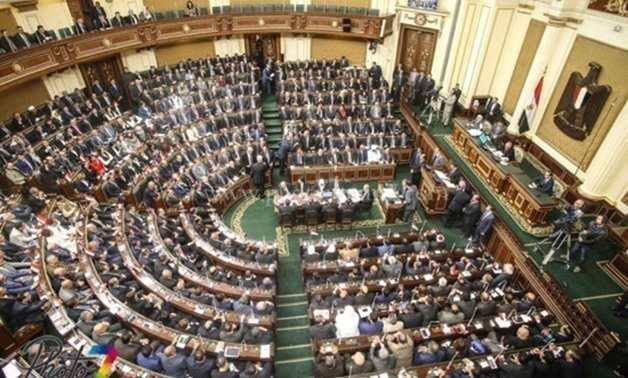
FILE - Egyptian Parliament
CAIRO – 6 June 2018: Twenty five days before the new fiscal year starts, the Egyptian Parliament approved the 2018/2019 budget after discussing all its items.
During the upcoming days, the final draft of the budget will be sent to President Abdel Fatah al-Sisi to ratify the budget in order to be taken into action.
Egypt Today highlights the most prominent figures of the budget for 2018/2019 that is considered to be the largest budget in Egypt’s history.
Egypt’s fiscal year starts on July 1 and ends on June 30 of the following year.
The expenditures
The first chapter of the budget included the expenditures with a total of LE 1.41 trillion, including total expenditures of wages and pensions, recording LE 270.09 billion, while the expenses of the purchase of goods and services reached LE 60.12 billion.
The total expenditures of grants, subsidies and other benefits amounted to LE 332.3 billion, while interest expenses recorded LE 541.3 billion, and other expenses reached LE 75.69 billion.
Expenses of “Purchase of non-financial assets/investments” totaled at LE 148.51 billion.
Meanwhile, the expenses of the acquisition of assets amounted to about LE 24.62 billion.
The expenses of repayment of loans, “domestic and foreign ones”, hit LE 276.04 billion.
Revenues
The second chapter of the budget is revenues, which are projected to reach a total of LE 989.2 billion, and taxes and tariff yields allocate to contribute LE 770.3 billion to the new budget’s revenues.
The revenues of grants recorded LE 1.141 billion, and the other revenues is expected to target LE 217 billion.
Yields of loans are estimated to be about LE 24.6 billion and the borrowing is about LE 714.9 billion.
The initial public offering (IPO) program allocates LE 10 billion of the next budget’s revenues.
In 2016, the government launched an IPO program that offers shares in several state-owned companies over three to five years in fields such as petroleum, services, chemicals and real estate to help boost state finances.
The Initial Public Offerings program is conducted under the supervision of the Ministry of Investment.
It covers a period of three to five years, aiming to offer partial stakes in some state-owned companies on the Stock Exchange. It will serve as a main tool to attract local and foreign capital flows to Egypt.
As per Investment, the budget targets to worth LE100 billion up from LE 70 billion in the current budget.
Unemployment and inflation
The upcoming budget seeks to lower the unemployment rate between 10 to 11 percent with an inflation rate of 10 percent.
Minister of Planning Hala al-Saeed expected earlier the unemployment rate to continue to decrease gradually to record 10.4 percent during the fiscal year 2018/2019 and to achieve 8.5 percent by 2021/2022.
Egypt 2030 Vision aims to reduce unemployment from the current percentage to 4 percent.
Egypt’s unemployment rate declined 1.4 percent during the first quarter of 2018 to 10.6 percent, compared to 12 percent in the same period of 2017.
In 2017, the unemployment rate slipped to 11.8 percent, compared to 12.5 percent in 2016, according to the Central Agency for Public Mobilization and Statistics (CAPMAS).
Egypt 2030 Vision aims to reduce unemployment from the current percentage to 4 percent.
Gross Domestic Product (GDP)
Egypt is targeting a growth rate of 5.8 percent in the next budget, to be accelerated gradually to 8 percent by 2021/2022.
It is expected to reach LE 5.250 trillion compared with LE 4.106 trillion this fiscal year.
The International Monetary Fund (IMF) expected Egypt to reach GDP of 5.5 percent next year, with an increase of 0.2 percent.
The IMF further anticipated the GDP to record 6 percent in 2023.
Budget Deficit
The 2018/2019 budget aims to record a budget deficit of 8.4 percent, or LE 438.58 billion, down from 9.7 percent estimated for the current year.
Public Debt
Public debt is expected to be lowered in the next fiscal year to 91 percent of GDP.
Minister of Finance Amr el-Garhy said earlier that his ministry is working on a medium-term plan to decline the public debt from 107-108 percent in fiscal year 2016/2017 to reach 80 percent by 2020.
Garhy clarified that this decline will be reached through decreasing the budget deficit, achieving a primary surplus of 2 percent of gross domestic product (GDP) and increasing average per capita income.

Comments
Leave a Comment